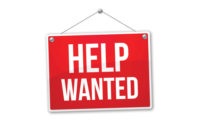The acceleration in real GDP in the second quarter primarily reflected positive contributions from personal consumption expenditures, private inventory investment, exports, nonresidential fixed investment, state and local government spending, and residential fixed investment. Imports, which are a subtraction in the calculation of GDP, increased, according to the BEA.
Perhaps the leap in GDP growth will calm some of the uncertainty and confusion about where the U.S. economy is headed.
For example, Fed Chairwoman Janet Yellen recently gave a reading on the health of the U.S. economy and warned that “considerable uncertainty” about the outlook could lead to interest rates rising earlier, or later, than currently expected.
Yellen was presenting the Fed’s semi-annual monetary policy report to Congress. She said the jobs market had “registered notable improvements” this year but the pace of economic growth “bears close watching.”
Observers should be cheering the second quarter report. Gross domestic product was predicted to increase at a 3.0 percent annual rate, according to a Reuters survey of economists. Earlier in the second quarter, growth estimates did reach as high as 4 percent, but were lowered as consumer spending and business investment rebounded less than expected. The “advance” estimate of 4.0 GDP second quarter growth is a win for the bulls in the business world.
Past thinking on the economy was reflected in Fed chair Yellen’s press conference in June, where she said, “We have in the past seen false dawns, periods in which we thought growth would pick up speed and the labor market would improve more quickly.”
Now optimism carries the day. “Pretty much across the board, components will look better. I do think we can sustain a 3 percent growth number for the next couple of quarters,” Jim O’Sullivan, chief U.S. economist at High Frequency Economics in Valhalla, New York, told Reuters.
There’s still room for wariness and caution, though. The Wall Street Journal reported that the gains follow a first quarter when the economy shrank. The economy only grew at about a one percent pace for the first half of 2014.
Annual revisions, released by the BEA on July 30th, showed the economy also expanded at a four percent pace in the second half of 2013, the best six-month stretch in 10 years.
But figures over the past five years, including new revisions back to 2011, continue to tell a “familiar tale,” according to the Journal. “Unable to string together several quarters of steady growth, the recovery that began in 2009 is the weakest since World War II,” the Journal reported.
Uptick in consumer confidence & housing data
Reuters reports U.S. consumer confidence jumped to its highest level in nearly 6-1/2 years in June and sales of new homes surged in May. Has the economy regained momentum?
“This is convincing evidence
that the economy continues to expand,” Chris Rupkey, chief financial economist at Bank of Tokyo-Mitsubishi UFJ in New York, told Reuters. “It takes a lot of confidence to buy the biggest of big ticket items consumers ever face, buying a new home.”
The Conference Board said its consumer confidence index rose to 85.2, the highest reading since January 2008.
Also in the spring, the Commerce Department said new home sales soared 18.6 percent to a seasonally adjusted annual rate of 504,000 units, the highest level since May 2008.
The increase in sales was the biggest since January 1992.
U.S. factory, auto sales data bolster growth outlook
U.S. manufacturing activity rose at a steady clip in June and automobile sales raced to their highest level in almost eight years, pointing to momentum in the economy, according to Reuters.
“We come away from these reports with a higher level of conviction that the U.S. economic recovery is strengthening,” Millan Mulraine, deputy chief economist at TD Securities in New York, told Reuters.
The Institute for Supply Management said its index of national factory activity for June was at 55.3, little changed from May’s 55.4 reading. A figure above 50 indicates expansion.
New orders hit a six-month high — a good omen for business capital spending, which appeared to struggle during the first half of the year.
“It’s all very constructive. The second half of the year should look much, much better for capex (capital expenditure) investment,” Jacob Oubina, senior U.S. economist at RBC Capital Markets in New York, told Reuters.
Surprise, surprise
Second quarter growth outpaced almost all forecasts. A disappointing report on durable goods orders in June spurred JPMorgan and Goldman Sachs to shave their second-quarter outlook by 0.1 percentage point to 2.6 percent and 3.0 percent growth, respectively.
While recent anxiety over conflict in Ukraine and Middle East has somewhat squelched stock prices, it has not spooked investors enough to prompt them to dump equities for bonds and cash, according to Reuters.
“The market has been resilient to these setbacks. They have taken bad news in stride,” Steve Weiting, global chief investment strategist with Citi Private Bank in New York told Reuters.
There has been steady improvement on the job front. Domestic jobless claims in July fell to their lowest since early 2006, while monthly jobs gains have jumped by more than 200,000 in each of past five months, a level of strength last seen in the late 1990s.
More Americans have returned to work, yet Federal Reserve Chair Yellen remains worried about stagnant wage growth and a low inflation rate that is below the Fed’s two percent target.
Those concerns support thinking that the Fed will not move away from its near-zero interest rate policy, according to Reuters.
A caveat
The New York Times analyzed GDP figures by economic sectors and found five drags still holding back the economy from what would be a traditional rebound:
• Consumers are still cautious, perhaps in debt, and are not purchasing big-ticket items such as furniture, refrigerators, washing machines, stoves, etc. – durable goods. Auto sales, while recovering, are still off from what they should be at this point after the Great Recession, again reflecting consumers’ reluctance to spend big.
• New home starts, while making something of a comeback similar to auto sales, are nowhere near pre-recession levels. The Times speculated that young consumers might not have sufficient savings or credit to buy new homes.
One reason for consumer retrenchment: many workers have not received cost-of-living adjustment annual raises since the Great Recession, and many took 10-30 percent pay cuts during the recession which have not be repaid in full by employers.
• Employers for their part are not investing heavily in capital expenditures, reflecting their own reservations about the strength of the recovery.
• Finally, both state governments and the Federal government are not spending and funding projects and programs at the rate they were before the recession.





